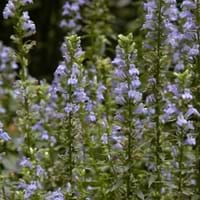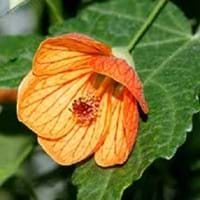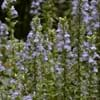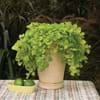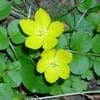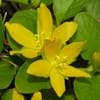Life Span
Perennial
Annual
Origin
Northeastern United States, Mid-Atlantic United States, Southeastern United States, Central United States, Texas, Canada
Brazil
Types
Not available
Abutilon Hybridum
Abutilon Megapotamicum
Abutilon Palmeri
Number of Varieties
Not Available
Habitat
Open areas, stream banks, Wet Woods
Grassland, Rocky areas
USDA Hardiness Zone
4-8
8-10
Sunset Zone
1a, 1b, 2a, 2b, 3a, 3b, 4, 5, 6, 7, 8, 9, 14, 15, 16, 17
H1, H2, 8, 9, 12, 13, 14, 15, 16, 17, 18, 19, 20, 21, 22, 23, 24
Habit
Clump-Forming
Clump-Forming
Flower Color
Blue, Lavender, Blue Violet
Yellow, Red
Flower Color Modifier
Bicolor
Bicolor
Fruit Color
Not Available
Tan
Leaf Color in Spring
Green, Dark Green
Green, Gray Green, Dark Green
Leaf Color in Summer
Green, Dark Green
Green, Gray Green, Dark Green
Leaf Color in Fall
Green, Dark Green
Green, Gray Green, Dark Green
Leaf Color in Winter
Light Green
Green, Gray Green, Dark Green
Leaf Shape
Lanceolate
Heart-shaped
Plant Season
Summer, Fall
Spring, Summer, Fall
Sunlight
Full Sun, Partial Sun, Partial shade
Full Sun, Partial Sun
Type of Soil
Clay, Loam
Loam, Sand
The pH of Soil
Acidic, Neutral, Alkaline
Acidic, Neutral, Alkaline
Soil Drainage
Average
Average
Bloom Time
Summer, Late Summer, Early Fall
Indeterminate
Tolerances
Deer resistant, Shade areas, Wet Site
Not Available
Where to Plant?
Ground
Container, Ground, Pot
How to Plant?
Divison, Seedlings
Grafting, Seedlings, Transplanting
Plant Maintenance
Low
Medium
Watering Requirements
Do not let dry out between waterings, Needs Very high moisture, Requires consistently moist soil
Form a Soil ring to water efficiently, Never Over-water, Requires regular watering, Use Mulches to help prevent water loss during hot and windy weather, Water Deeply
In Summer
Lots of watering
Lots of watering
In Spring
Moderate
Moderate
In Winter
Average Water
Average Water
Soil pH
Acidic, Neutral, Alkaline
Acidic, Neutral, Alkaline
Soil Type
Clay, Loam
Loam, Sand
Soil Drainage Capacity
Average
Average
Sun Exposure
Full Sun, Partial Sun, Partial shade
Full Sun, Partial Sun
Pruning
Remove damaged leaves, Remove dead branches, Remove dead flowers, Remove dead leaves, Remove deadheads
Prune in spring, Remove dead leaves, Remove deadheads
Fertilizers
10-10-10, Balanced liquid fertilizer
All-Purpose Liquid Fertilizer
Pests and Diseases
Head smut, Rust, Slugs, Snails
Red blotch
Plant Tolerance
Deer resistant, Shade areas, Wet Site
Drought
Flower Petal Number
Single
Single
Foliage Texture
Medium
Medium
Foliage Sheen
Matte
Matte
Attracts
Bees, Birds, Butterflies, Hummingbirds
Birds, Hummingbirds
Allergy
Skin irritation, Skin rash, Toxic if not prepared properly
Not Available
Aesthetic Uses
Beautification, Cottage Garden, Showy Purposes
Beautification, Showy Purposes
Beauty Benefits
Skin Problems
Not Available
Environmental Uses
Air purification
Air purification
Medicinal Uses
Diarrhea, Dysentry, Healing, Stomach pain, Syphilis
Diarrhea, Lung Problems
Part of Plant Used
Bark, Flowers, Leaves, Root
Whole plant
Other Uses
Used as Ornamental plant, Used for its medicinal properties
Showy Purposes
Used As Indoor Plant
No
Yes
Used As Outdoor Plant
Yes
Yes
Garden Design
Mixed Border, Wildflower
Bedding Plant, Container, Feature Plant, Foundation, Hedges, Mixed Border, Topiary, Bonsai, Espalier, Tropical
Botanical Name
LOBELIA siphilitica
ABUTILON megapotamicum
Common Name
Great blue lobelia, great lobelia
Indian mallow or Velvetleaf
In Hindi
महान ब्लू लोबेलिआ
Abutilon
In German
Great Blue Lobelia
Abutilon
In French
Great Lobelia bleu
Abutilon
In Spanish
Gran Lobelia azul
Abutilon
In Greek
Μεγάλη Μπλε Lobelia
Abutilon
In Portuguese
Grande Lobelia azul
Abutilon
In Polish
Great Blue Lobelia
Abutilon
In Latin
Blue Lobelia
Abutilon
Phylum
Magnoliophyta
Tracheophyta
Class
Magnoliopsida
Magnoliopsida
Order
Campanulales
Malvales
Family
Lobeliaceae
Malvaceae
Clade
Angiosperms, Asterids, Eudicots
Angiosperms, Eudicots, Rosids
Tribe
Not Available
Malveae
Subfamily
Lobelioideae
Malvoideae
Season and Care of Great Blue Lobelia and Abutilon
Season and care of Great Blue Lobelia and Abutilon is important to know. While considering everything about Great Blue Lobelia and Abutilon Care, growing season is an essential factor. Great Blue Lobelia season is Summer and Fall and Abutilon season is Summer and Fall. The type of soil for Great Blue Lobelia is Clay, Loam and for Abutilon is Loam, Sand while the PH of soil for Great Blue Lobelia is Acidic, Neutral, Alkaline and for Abutilon is Acidic, Neutral, Alkaline.
Great Blue Lobelia and Abutilon Physical Information
Great Blue Lobelia and Abutilon physical information is very important for comparison. Great Blue Lobelia height is 60.00 cm and width 30.50 cm whereas Abutilon height is 60.00 cm and width 90.00 cm. The color specification of Great Blue Lobelia and Abutilon are as follows:
Great Blue Lobelia flower color: Blue, Lavender and Blue Violet
Great Blue Lobelia leaf color: Green and Dark Green
Abutilon flower color: Yellow and Red
- Abutilon leaf color: Green, Gray Green and Dark Green
Care of Great Blue Lobelia and Abutilon
Care of Great Blue Lobelia and Abutilon include pruning, fertilizers, watering etc. Great Blue Lobelia pruning is done Remove damaged leaves, Remove dead branches, Remove dead flowers, Remove dead leaves and Remove deadheads and Abutilon pruning is done Prune in spring, Remove dead leaves and Remove deadheads. In summer Great Blue Lobelia needs Lots of watering and in winter, it needs Average Water. Whereas, in summer Abutilon needs Lots of watering and in winter, it needs Average Water.
